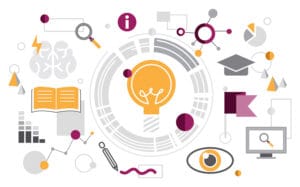If you work in sales or own a business, you’ve probably heard the phrase sales enablement more times than you can recall. If you still nod sagely whenever individuals in your circle discuss it but have no idea what it entails, you’re not alone. While it’s a hot topic, there appears to be a lot of confusion around it. That’s why we define what sales enablement is and why you should deploy sales enablement tools.

What is Sales Enablement?
Although there is no narrow definition of sales enablement yet, it can be described as any practice, strategy, or tool designed to enable sales reps to build their pipelines and engage buyers with the ultimate goal of improving an entity’s sales cycle. In a layman language, enablement refers to all the training and resources offered to sales reps to help them sell more effectively. In that light, sales enablement usually involves:
- Recruiting and hiring the right salespeople
- Educating and motivating the sales team to work towards engaging more buyers and closing deals.
- Equipping the sales reps with the necessary tools to do the above.
- Assessing who’s working and also, what strategies or tools are not working.
Benefits of Sales Enablement Technology
In a nutshell, the goal of sales enablement is to ensure all sales reps are achieving their potential. This way, the company does not have to rely on a few salespeople. However, achieving this is usually easier said than done. Here is how deploying the right sales enablement tools makes things less complicated
1. Enables Your Sales Teams to Focus on Selling
An article by Forbes shows that sales reps usually spend almost 65% of their time on administrative tasks, which are in no way beneficial to the company. By implementing the right sales enablement tools, it’ll be easier to identify these non-revenue generating processes that cause your sales team to waste time. As a result, you can choose to either eliminate, reassign, or automate these processes so your sales reps can get more time to focus on what you hired them to do.
2. Equips Sales Teams with Priceless Buyer Information
The reason why most sales reps are usually unable to attain their quotas is because of ineffective pitching. But other than that, it’s also because they waste a lot of time chasing non-prospects. Their inability to approach the right clients and pitch the right way is due in large part to the lack of information about these clients.
The good news is that this is a problem you can solve using sales enablement technology. The right tool acts as a unified platform where sales reps can find all the information they need to know about your potential buyers. As a result, they are then able to know where to find them. Also, they learn how to tailor their pitch in a way that addresses every prospect’s unique interests and needs and, as a result, close more deals.
3. Enhances Collaboration Across Marketing and Sales Departments
When your marketing and sales teams work together, you’re guaranteed nothing but success. Unfortunately, there is usually a lack of cohesion between these two departments, causing them to work towards different goals. As noted, enablement technology acts as a unified platform. Through the platform, teams from both departments are usually able to communicate and share ideas effectively. This, in turn, ensures that both marketing strategies and sales goals are aligned and, consequently, meaningful sales cycles.
Sales enablement is a key component to success in today’s dynamic business world. However, having the best enablement strategies isn’t enough. You need to deploy sales enablement tools from a reliable vendor to amass the full benefits.











